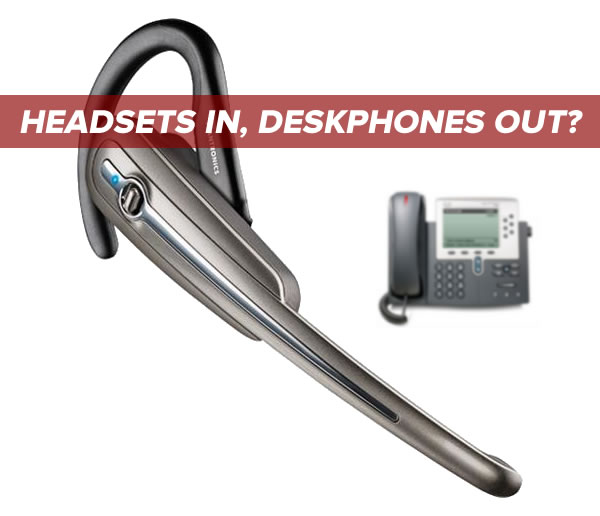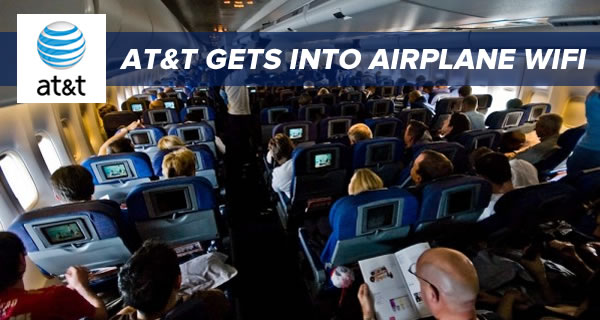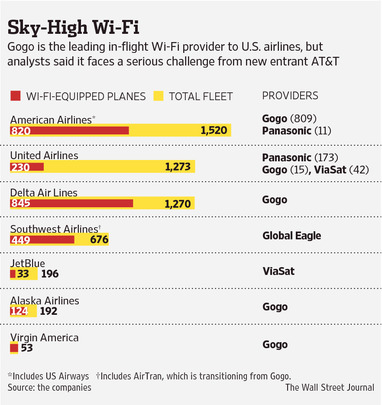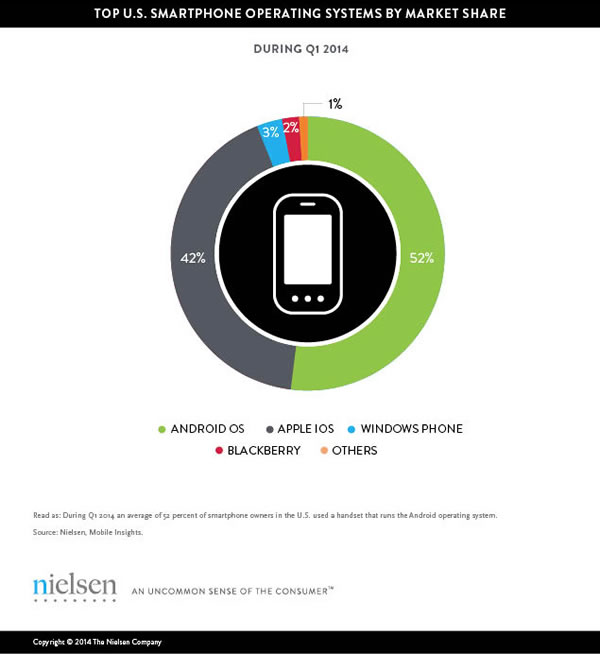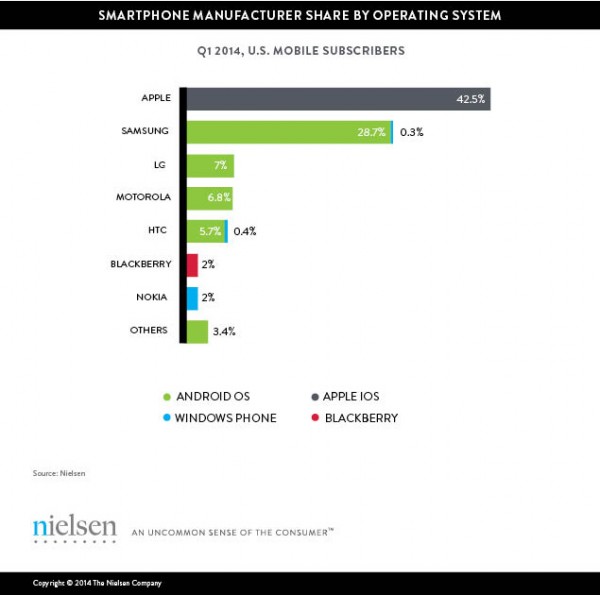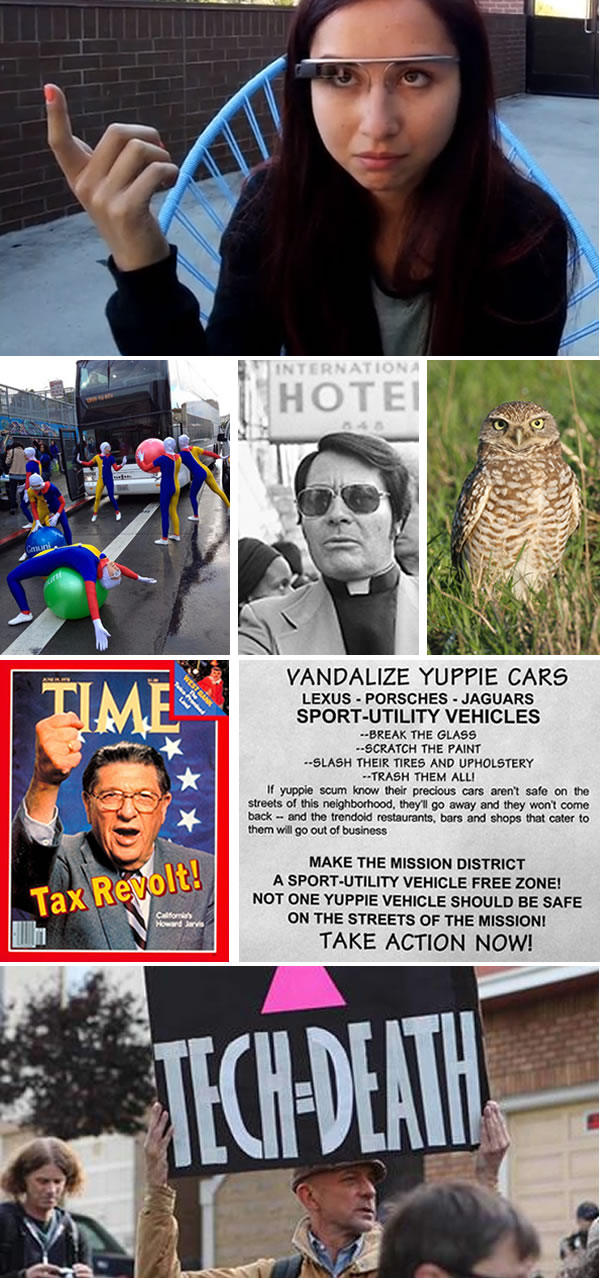In case you don’t recognize it, it’s a Commodore cassette tape drive, which they called the “Datasette”, which was cheaper than a diskette drive.
In Apple and Samsung’s battle for the mobile market, truth is stranger than fiction
Click the photo to read the Vanity Fair article.
Vanity Fair’s Kurt Eichenwald, whom you probably remember from his August 2012 article on Microsoft’s wane in market share and influence under Steve Ballmer, has written a new article titled The Great Smartphone War. In the battle to own the hardware market for the next frontier in computing and communications, the stakes are high, the competition is fierce, the lawsuits are plenty, and sometimes, the story turns weird.
Eichewald’s earlier article showed Microsoft in a very unflattering light, but it seems like a mild rebuke compared to the way Samsung looks in The Great Smartphone War. He paints a picture of a company formerly known for producing second-rate electronics rising to power through tactics such as price-fixing, bribery, patent violations, using countersuits as delaying tactics while they quietly took the market, creating near-faithful duplicates of competitors’ innovations, and in one case, eating evidence before letting Apple’s legal team come into an office to take depositions.
Are headsets the new deskphones?
Click the photo to read the article.
In What…No Deskphones? Barbara A. Grothe, the CEO of an independent IT and technology consultancy, writes about her recent experiences deplying Microsoft Lync as the primary voice communication tool at a couple of client offices. The only deskphones deployed were “a few hallway phones and conference star phones with full duplex speakerphones built in”; all other phone calls made or taken at employee desks were done via Lync running on their computers and wireless headsets. The CIOs at the client firms saw that between employees working outside the office and seeing employees using their own mobile phones at their desks, why bother spending money on deskphones?
Grothe’s consultancy didn’t simply give the employees unopened boxes of headsets and leave them on their own to figure them out. Instead, they made sure that each employee received a fully-charged headset, installed their corresponding dongles and software on their computers, and showed each employee how to use the headset during the installation process. They also made sure that the C-level executives were the first to try the Lync/headset combo; “If the CIO and President of this company can conduct business without a deskphone,” writes Grothe, “then the employee felt motivated to follow suit.”
The use of wireless headsets allowed employees to answer incoming calls even when they were up to 30 feet away from their desks. With this convenience came one issue: unlike deskphones, where you can simply pick up the handset and dial, you have to be logged into your machine first in order to place a call using this setup.
Wireless carrier stats: AT&T, Sprint, T-Mobile, Tracfone, and Verizon
Click the photo to read the article.
Jackdaw Research’s blog, Beyond Devices, maintains a running tally titled US Wireless Numbers that tracks the following figures released by the major wireless carriers as they report their quarterly results:
- Subscribers: AT&T has the most, followed in descending order by Verizon, Sprint, T-Mobile, then Tracfone. AT&T also has the largest proportion of wholesale and connected customers.
- Wireless revenue: Verizon makes the most — over $20 billion a quarter — followed in descending order by AT&T, Sprint, T-Mobile, and Tracfone.
- Operating margins: Verizon’s is the highest (nearly 40%), followed by AT&T and Tracfone. Sprint and T-Mobile have had the lowest operating margins over the past couple of years, with T-Mobile having recently traded places with Sprint and currently having the lowest (running about slightly below 0%).
- EBITDA margins: That’s Earnings Before Interest, Taxes, Depreciation, and Amortization, and from highest to lowest, it’s Verizon at about 45%, followed by AT&T (40%), Sprint (20%), T-Mobile, and Tracfone (both about 15%).
- Capital intensity: This refers to wireless capital expenditures as a fraction of wireless revenues. Here, the Big Four are within about 8% of each other, all between 10% and 20%, with AT&T spending the largest proportion of their wireless revenue on wireless infrastructure, followed by T-Mobile, Verizon, and Sprint.
- Net adds: Who’s been adding the most customers lately? It’s T-Mobile, followed by Tracfone, AT&T, Verizon, then Sprint. Sprint is the only carrier who’s been showing a net loss of customers.
- ARPU: Average Revenue Per User is tricky to report. Verizon doesn’t report ARPU anymore; they report Average Revenue Per Account. T-Mobile reports Average Billings Per User. Changes in the way the carriers are subsidizing handsets will also change how other carriers report their average revenue numbers.
- Churn: The churn rates of the Big Four are within 1.5% of each other. Sprint has the most at just above 2%, followed by T-Mobile around 1.5%, and AT&T and Verizon are tied at about 1%.
- Smartphone sales: Even though the data is patchy and incomplete, it’s still obvious that we’re now in the smartphone age. For all Big Four carriers, 90% or more of postpaid sales were for smartphones.
They’ll be updating this page regularly, so visit it each quarter.
Plastic, metal and glass: the upsides and downsides of materials used to build mobile devices
Click the photo to read the article.
AnandTech is my go-to site for solid, detailed, analyses of mobile hardware and software, and here’s one reason: their recent article, Discussion on Material Choices in Mobile, analyzes the pros and cons of plastic, metal, and glass, the materials used to build smartphone bodies.
Photo posted by History in Pictures, found via Frank Michlick. Click the photo to see its source.
One of the more interesting products to be announced at the recent Mobile World Congress this year wasn’t a mobile phone, but an accessory: SanDisk’s 128 GB (gigabytes, where a gigabyte is about 1 billion bytes) SDXC card. A mere nine years ago (two years prior to when the entire mobile industry was redefined by the iPhone), 128 MB (megabytes, where a megabyte is about 1 million bytes, one thousandth of a gigabyte) was the bleeding edge for MicroSD-sized memory cards.
Here’s another way to think of this leap in memory technologies:
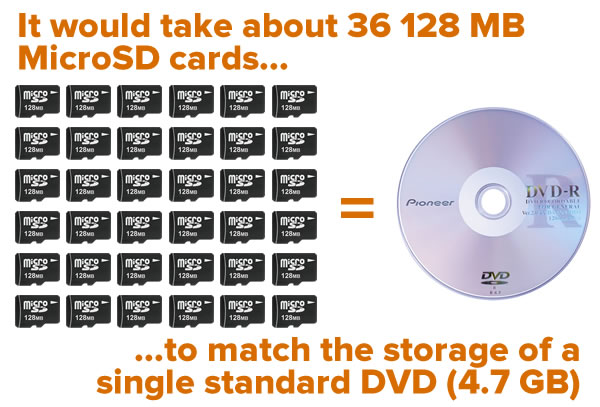
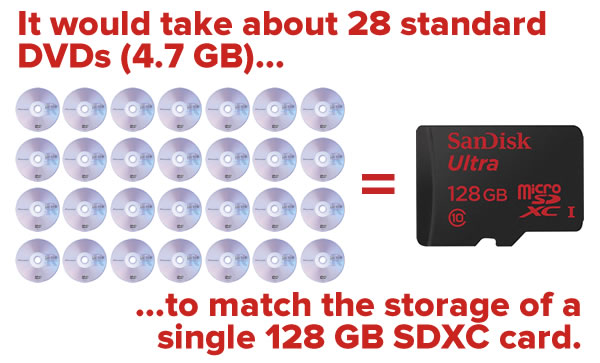
As of this writing (May 2, 2014), the SanDisk Ultra 128 GB MicroSD card sells at Best Buy for $200. Popping it your SD card-capable mobile device (most Androids and Windows Phone devices) will give it the storage capacity of the current starter model MacBook Air.
That’s a lot of apps, music, video, and who knows what other kinds of data once some smart app developers imagine what’s possible on a mobile device once you give it the drive space formerly reserved for desktop and laptop systems.
AT&T gets into the in-flight wifi business
AT&T announced on Monday that they’re joining forces with Honeywell International to provide high-speed, in-flight wifi in the U.S.. The service would give fliers access to AT&T’s 4G and LTE service from their airline seats.
Michael Small, CEO of Gogo, who in six years has managed to capture half the market, says he isn’t worried. “An entrant to the U.S. market at this state is too little, too late,” he said. “We believe airlines are going to be making a lot of decisions about connectivity this year and next,” a time frame during which AT&T will be getting their service set up while Gogo is already in operation.
Gogo may have a significant share of the wifi on US flights, but theirs is an expensive business. The company has been posting increasing losses over the past two years — $96 million in 2012, and $146 million in 2013. Deep-pocketed rivals with other sources of revenue like AT&T — and Panasonic, who bought in-flight entertainment provider LiveTV in March for almost twice as much as Gogo’s 2012 and 2013 losses — could simply choose to play the waiting game and let Gogo spend itself out of existence…or into acquisition.
The market seems to think that AT&T, despite being the new kid on the block in this particular market, are poised to succeed. Here’s a CNNMoney report on that sentiment:
Other reports on AT&T’s entry into the in-flight wifi business:
- AT&T Plans to Provide Wireless Internet for Airplanes (New York Times)
- Uh-Oh, Gogo: AT&T Says It’s Building a Better In-Flight WiFi (Yahoo! Tech)
- AT&T, Honeywell to challenge Gogo’s airborne Web business (Chicago Tribune)
- Mobilizing the Sky: AT&T Building 4G LTE In-Flight Connectivity Service (MarketWatch)
- AT&T to take on Gogo with in-flight Wi-Fi (PC World)
Verizon has a secret cave full of backup equipment in case of a crisis or natural disaster
 Sixty feet below the ground, in an undisclosed location — but presumably within driving distance of the studios of Kansas City’s FOX 4 News studios — is Verizon’s cave of recovery equipment. The cave is climate-controlled and protected from the elements, and the gear allows Verizon to restore service in hours when the region’s tornadoes or other natural disasters destroy a cellular tower, cut a fiber line, or disrupt power.
Sixty feet below the ground, in an undisclosed location — but presumably within driving distance of the studios of Kansas City’s FOX 4 News studios — is Verizon’s cave of recovery equipment. The cave is climate-controlled and protected from the elements, and the gear allows Verizon to restore service in hours when the region’s tornadoes or other natural disasters destroy a cellular tower, cut a fiber line, or disrupt power.
Tony LaRose, head of operations for the facility says “We really got concerned after the Joplin tornado went through about all this equipment just being out in a parking lot. We started looking around thinking how can we make that equipment more secure? This cave location was a perfect solution.”
Network improvements at Sprint and T-Mobile
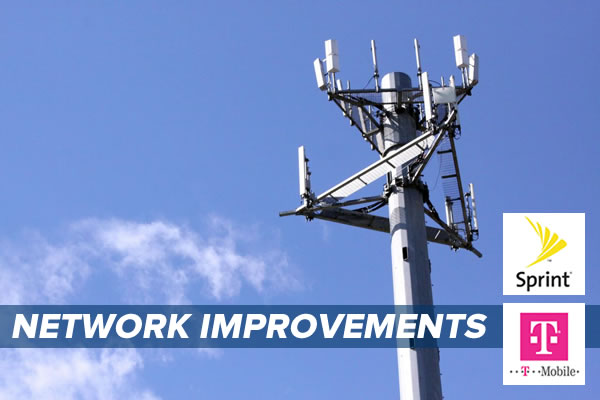
While T-Mobile have been making headlines by competing very fiercely on price and eliminating overage fees, the cellular market isn’t an overly price-sensitive market, especially when factors such as the network weigh heavily when customers choose a carrier. Network speed is usually a selling point, and as we reported in an earlier article, the crowdsourced wireless analytics group OpenSignal declared that T-Mobile had the fastest LTE network in March, boasting average speeds of 11.5 Mbps (megabits per second).
Speed isn’t the only issue with cellular data, however. If you’ve ever had full signal strength and a fast connection only to lose it because you walked a couple dozen paces in the wrong direction, you know that stability is also important. Most current LTE systems use what’s called 2×2 MIMO antenna technology. MIMO is short for “Multiple In, Multiple Out”, and the 2×2 means that the connection in your phone is established by 2 antennas at the cellular tower, and 2 in your phone. This year, starting in Chicago, Dallas, and San Antonio, T-Mobile plans to deploy 4×2 MIMO systems, which doubles the antennas at the tower that establish the connection with your phone and ensures a better, more stable connection.
T-Mobile have also just closed a deal to acquire access to the very desirable 700 MHz spectrum from Verizon. This frequency band, which is lower than the 1700 – 2100 MHz range in which T-Mobile currently operates, doesn’t carrier as much data as higher frequencies, but travels farther and penetrates barriers such as buildings and thick vegetation. This new frequency band will be used to improve coverage in “nine of the top 10 and 21 of the top 30 metro areas in the country” including Atlanta, Dallas, Detroit, Houston, Los Angeles, Miami, New York, Philadelphia, and Washington D.C..
Sprint is also deploying improvements to its network in the form of Sprint Spark, a technology that uses three different radio frequency ranges and supercharges data transmission speeds to 50 to 60 Mbps, which is about ten times as fast as the average U.S. data speed (according to OpenSignal, the average data transmission speed on U.S. LTE networks is 6.5 Mbps). Spark will appear in 100 U.S. cities over the next three years.
For more reports on Sprint and T-Mobile’s network improvements:
Strategy Analytics’ global smartphone market share numbers
Strategy Analytics reports the following numbers on global smartphone shipments for Q1 2014:
- Global smartphone shipments across all vendors grew to 285 million in Q1 2014, a 33% jump from the previous year.
- Apple shipped 43.7 million iPhones worldwide in Q1 2014, capturing 15% of the market, a 2% drop from Q1 2013. They continue to do well in the high end, but Strategy Analytics says that “a lack of presence in the entry-level category continues to cost it lost volumes in fast-growing emerging markets such as Latin America.”
- Samsung shipped 89.0 million smartphones worldwide in Q1 2014 capturing 31% of the market, a 1% drop from Q1 2013 and their first loss in market share since Q4 2009. According to Strategy Analytics, “Samsung continues to face tough competition from Apple at the higher-end of the smartphone market and from Chinese brands like Huawei at the lower-end.”
- With “more competition than ever coming from the second-tier smartphone brands”, the combined Apple/Samsung global market share of smartphones dropped from 50% in Q1 2013 to 47% in Q1 2014.
- In the same period, Huawei remained steady at 5%, while Lenovo grew its share from 4% to 5%.
Nokia’s first new ad under Microsoft says it’s “not like everybody else”
Here’s the first Nokia ad released after the acquisition by Microsoft became official. It features the Nokia logo in the corner, but closes with the Microsoft logo:
They’re certainly not like everybody else, at least in terms of market share, if you check the next segment below…
Neilsen’s U.S. smartphone marketshare numbers for Q1 2014
According to Neilsen Research, 52% of the smartphones in the U.S. run Android, while 42% run iOS. The most popular smartphone manufacturer in the U.S. is Apple, whose phones are used by 42%, followed by Samsung with almost 29%:
Neilsen also say:
- “As of Q1 2014, for the first time, a majority of U.S. mobile subscribers of all age groups own smartphones.”
- 7 out of 10 Americans own a smartphone.
- 85% of people buying new mobile phones bought smartphones rather than feature phones.
What we thought today’s technologies might look like, back in the ’80s
Here’s an image from the 1980s, which tries to imagine the phone of the future:

And here’s the cover of the April 1981 edition of that old “small systems journal”, BYTE. The theme of that issue was “Future Computers”, and the cover depicts what we’d call a smartwatch today:

If you’re looking for some deep insight into the current fight in San Francisco over housing, gentrification, haves vs. have-nots, and techies vs. everyone else, Kim Mai-Cutler has written an excellent really-long-form piece on the various factors that contributed to the current situation. It’s not just the influx of techies moving in for cushy jobs and the long-time working class locals they’re displacing, but also:
- “The Great Inversion”: the current migration to cites in general,
- a willingness to create jobs matched by an equal unwillingness to creating housing,
- San Francisco’s byzantine planning process and zoning regulations,
- San Francisco’s city government,
- people’s tendencies to live in their own bubbles,
- rich non-techies trying to keep development to a minimum,
- progressives who refuse to believe in supply and demand,
- environmentalism as an excuse to curb development,
- a lack of affordable housing,
- incentives that fuel that lack of affordable housing,
- the city’s poor shape in 1978, compounded by Reverend Jim Jones (yes, the “drinking the Kool-Aid” guy), the murder of Harvey Milk, gas lines from the Iranian crisis, and Howard Jarvis’ tax revolt,
- incredibly low property and corporate taxes,
- the complex effect of rent control, especially with the lack of vacancy control,
- an economy prone to booms and busts,
- the Ellis Act, an act explicitly designed to let landlords go out of business, and its abuses,
- resentment against incoming techies, their amenities, and the businesses that seem oriented solely towards them, and
- the “new nativism”.
It’s a big, complex mess, but as Mai-Cutler points out a couple of times in her long essay, it doesn’t have to be this way. At the end of her piece, she makes some calls to action:
- To techies: To participate in the communities in which they now live, and participate in San Francisco’s civic life, as other companies like The Gap, Levi Strauss, and Salesforce have done, and to understand that there are locals who could benefit from their help.
- To homeowners: Enough with the NIMBYism and generation theft, already!
- To activists: You can’t logically fight both development and displacement. Worse, your antagonism will force deals to take place behind closed doors.
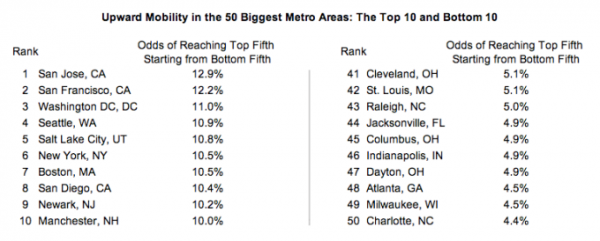
Mai-Cutler points out that one of the reasons San Francisco, like many other cities, is attractive to all sorts of people is that it provides opportunities not just for the rich, but for the poor as well. While the income inequality in the San Francisco Bay Area is distressing, it’s also an area with the highest chance that someone in the bottom 20% will end up in the top 20%. WhatsApp founder Jan Koum is probably the most recent high-profile example.
I’m going to finish with the closing paragraphs of her article:
In conclusion: The crisis we’re seeing is the result of decades of choices, and while the tech industry is a sexy, attention-grabbing target, it cannot shoulder blame for this alone.
Unless a new direction emerges, this will keep getting worse until the next economic crash, and then it will re-surface again eight years later. Or it will keep spilling over into Oakland, which is a whole other Pandora’s box of gentrification issues.
The high housing costs aren’t healthy for the city, nor are they healthy for the industry. Both thrive on a constant flow of ideas and people.
So while Google may not be opening a giant office in Detroit anytime soon, the people of Detroit and the Midwest are coming here.
I meet them every day.
There are people like Brian Clark, who actually did move from Detroit, and was living off various hackathon winnings while teaching coding in MissionBit’s after-school programsfor San Francisco’s public school students. Earlier this spring, he was literally sleeping on friends’ couches, eating one meal a day. But he won the Launch Hackathon and now has initial funding for a new startup called Vue, a mobile feedback and user engagement tool he built.
Or like Rey Faustino, who I wrote about last month. He grew up in a working-class family in Southern California that relied on social services to make ends meet. Now he’s working on fixing the problems he remembered as a child through One Degree, which is a Yelp-like platform that helps Bay Area families find the right non-profits and social services for them. It’s supported by Y Combinator and has thousands of users.
Many of the people who come here will stay, and make vital contributions for decades through their work, their taxes and their charitable contributions. Some will come for awhile and then go back and invigorate entrepreneurial ecosystems back home. This circulation of creative talent is crucial not only for the Bay Area, but for the rest of the United States.
I would not want to deny anyone — rich or poor — the chance to transform or be transformed by this place.
Read the article. It’s fantastic food for thought.


